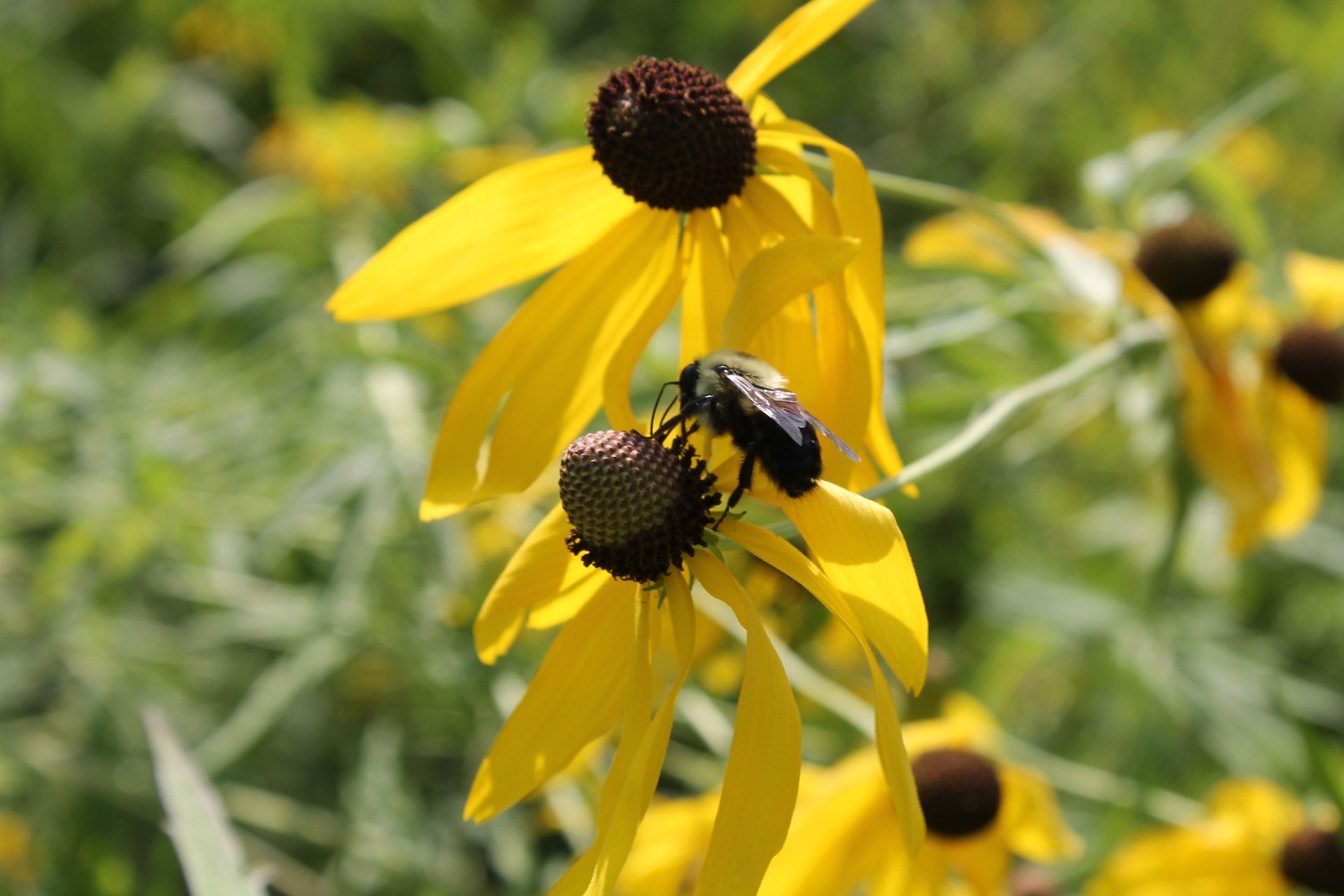Introduction
Beyond their stunning aesthetics, flowers play an essential role in the life cycle of pollinators, most notably bees. Certain flowers, with their particular attributes like shape, color, scent or nectar, seem almost engineered to attract bees. Why does attracting bees matter? These industrious insects are prime movers of pollen, aiding in the pollination process that triggers fruits and vegetables’ growth. More bees in your backyard mean a healthier, blooming green space. Let’s go through our list of the top 10 flowers that draw bees like magnets.
Lavender
Lavender is simply irresistible to bees, thanks to their vibrant purple hue and rich, alluring scent. Lavender flowers bloom over a reasonably long period, providing an ongoing food supply for bees. Their hardiness means they thrive even in dry, unfertile soils, making them a bee-happy, low-maintenance addition to your garden. Countryliving.com suggests cutting back lavender bushes in late summer to prolong their lifespan and encourage growth in the following year.
H2>Zinnias
Mainly colored in warm tones of orange, yellow, and pink, Zinnias are a flower bed staple that bees adore. In addition to their bold colors, Zinnias offer bees a flat landing surface and easy access to nectar, making them ideal bee attractions. As annuals, Zinnias should be planted every year. They require well-drained soil, ample sunlight, and regular watering for optimal growth.
Bee Balm
Bearing a name that hints at its popularity among bees, Bee Balm is a happy addition to the bee-friendly garden. With their bright red, dense flowers, they’re excellent at drawing bees. Bees favor these flowers due to their high nectar production. Birdsndblooms.com asserts that bee balm’s hardiness is a standout feature, tolerating a variety of soil types, and thriving even in partial shade.
Sunflowers
With their bright and cheery disposition, no flower says summer more than sunflowers. These inspiring giants are a bee’s delight, essentially mini ecosystems attracting a variety of insects, bees included. The large disk of the sunflower provides ample space for bees to land and gather nectar. Growing sunflowers requires a sunny spot, nutrient-rich soil, and decent watering, advises buddhabeeapiary.com.
Catmint
Catmint isn’t just for feline amusement; it’s a bona fide bee magnet. The small purple-blue flowers that cover the minty-scented foliage are rich in nectar. These tough perennials can endure an array of gardening conditions while providing a prolonged source of food for bees. They tend to thrive with minimal maintenance, needing only occasional trims to promote their next set of blooms.
Yarrow
Yarrows are drought-resistant perennials with delicate, small flowers forming a flat platform that bees find appealing. Bees feast on the yarrow’s nectar and pollen, and their petalled structure offers ample landing spaces for easy nectar access. Unlike others, they flourish in poor soil, require full sun and moderately dry conditions. Yarrow is typically pest-resistant, adding another reason to plant it in your garden.
Crocuses
The early-blooming Crocuses introduce a splash of color during the late winter and early spring, precisely when bees start seeking nectar after the winter pause. Small but plentiful, crocuses delight bees heading out for their first forage. To cultivate these bulbs, plant them in a sunny, well-drained area in the fall, ensuring a welcomed surprise the coming spring.
Asters
Asters keep your garden vibrant and buzzing with bee activity late in the season when other flowers have completed their cycle. Available in numerous varieties, asters burst into blooms from late summer to fall, offering bees essential late-season pollen. For optimal growth, Asters need a sunny location and well-draining soil. They also prefer regular watering and some species may need staking.
Coneflowers
Also known as Echinacea, Coneflowers are hardy perennials that sport a unique shape enticing to bees. Their wide, flat ‘cone’ provides a perfect landing pad for bees seeking pollen and nectar. Coneflowers bloom from early summer to fall, granting bees a sustained food source. They are low-maintenance, thriving in well-drained soil and full sun, and are also drought-resistant.
Goldenrod
Goldenrod is a late-season bloomer, ensuring bees receive a late-season pollen boost when other flowers begin to fade. Their sprays of tiny, bright yellow flowers are an instant bee lure. Goldenrod is surprisingly easy to care for, demonstrating resilience in a wide range of soils and environmental conditions, and they continue to bloom until the first winter frost hits.

